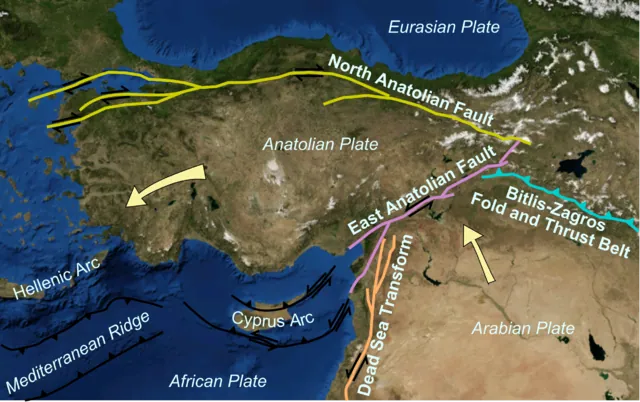On February 6, 2023, Turkey was struck by a major earthquake followed by a large aftershock. These two events are just two of the more than 70 quakes measuring magnitude 6.5 or higher recorded in the region since 1900. Let’s take a closer look at why Turkey is particularly susceptible to devastating earthquakes.
Fault zones
Turkey is considered one of the world’s most seismically active regions due to its two main fault zones – the East Anatolian and the North Anatolian. These fault zones are caused by the movement of tectonic plates, which make up the Earth’s outermost layer and are fragmented into around 15 major plates.
Although the movement of tectonic plates is slow, typically only a few centimeters per year, it still leads to a significant amount of deformation at the plate boundaries, causing earthquakes. Most earthquakes are associated with these tectonic plate boundaries, which are comprised of fault zones.

In Turkey, the East Anatolian Fault Zone encompasses the movement of the Anatolian Plate relative to the Arabian Plate to the southeast, while the North Anatolian Fault Zone involves the movement of the Anatolian Plate relative to the Eurasian Plate to the north. The Anatolian Plate makes up most of Turkey.
The 7.8-magnitude earthquake at 4:17 a.m. local time, and the unusually large 7.5-magnitude aftershock nine hours later, both took place in the East Anatolian Fault Zone.
However, the North Anatolian Fault Zone has also seen several devastating earthquakes, including a quake in 1999 located approximately 60 miles from Istanbul that claimed the lives of around 17,000 people.
Critical background
The earthquake that struck on February 6, 2023 was one of the most intense to hit the region, matching the magnitude of a devastating earthquake in December 1939 that claimed over 30,000 lives in northeast Turkey.







